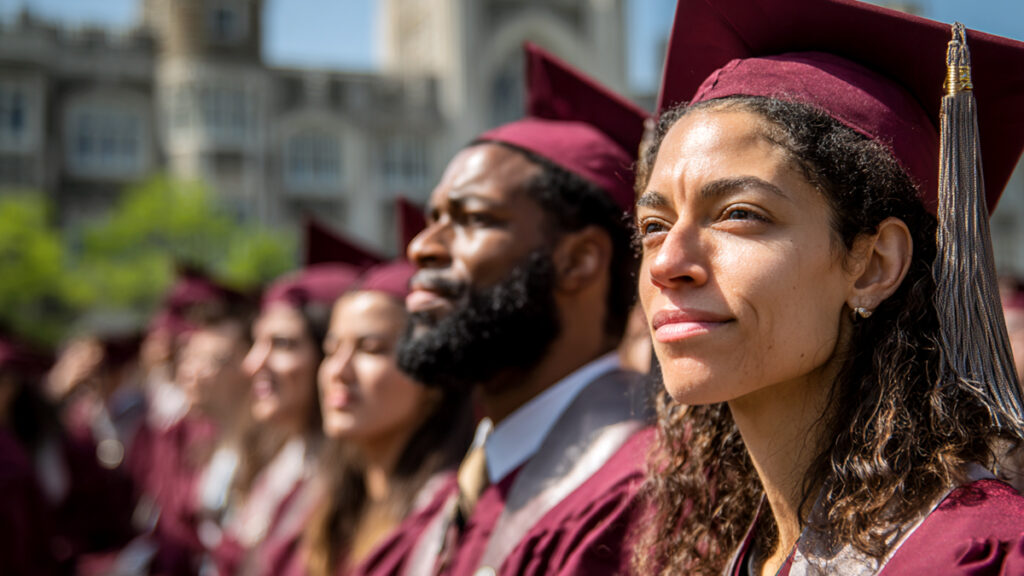By Lori Lee
NDG Contributing Writer
People choose to migrate because they are dissatisfied with their lives. Many just want a place to start over. It may be their political environment, violence, or poverty that causes them to leave, but whatever the reason, migration is a huge undertaking that brings on a lot of work and stress. Accompanied by changing jobs and leaving families behind, migration is among the highest of stressors, comparable to divorce, job loss, and major illness, according to the Social Readjustment Rating Scale.
People migrate because they lack hope, explained Gabriela Oliveira, Associate Professor of Education and Brazil Studies at Harvard, speaking at an October American Community Media briefing. They leave their homes because they look around and find little reason to believe things will change.
Some may find hope in seeking a higher education elsewhere. Others have lost their hope but still dream of earning more so their children might hope for a better life. Those from poorer nations may consider it a luxury for their kids simply to be able to focus on finishing school without having to work.
Most Americans already have this luxury. Ninety percent of U.S. citizens over age 25 have graduated high school, according to the U.S. Census Bureau. This shows improvement for the country placing it just below South Korea at 96.4% and well above Brazil at 56%, according to recent World Bank data.

Though younger children are more likely to stay in school and graduate, adolescents, in the midst of finding their identities, can stray away, though completing their education might just be the stabilizing force they need, said Oliveira. For immigrants from developing countries, the effects of a diploma can be exponential on social mobility, a diploma sometimes meaning the difference between poverty and a successful life. The American dream is very much still alive, said Oliveira.
“The promise of this meritocracy, that if you go to school and you work hard, you’re going to have an opportunity is really relevant for a lot of folks.”
U.S. classrooms are very different from those in Latin America or East Asia, said Oliveira, where there is more formality and deference to teachers. It is a huge jump coming from Latin America, she said, especially if you compare public schooling in a place like Brazil, where they lack school books and teachers.
In China, on the other hand, students known for excelling in STEM fields, may sacrifice critical thinking due to a focus on repetitive wrote learning, the International Journal of Chinese Education reported. Yet, critical thinking is expressed differently in different cultures, in East Asia, through a lens of harmony and respect for authority. South Korea’s definition of education is broader than landing a good job and academic achievement, said Oliveira.
It also entails a certain dignity, harmony and respect for its elders, noted Oliveira.
The U. S. can learn from these systems as well as Scandinavian countries like Finland, which rank among the highest education systems in the world. While prioritizing well-being, equity, and stress-free learning, their focus on critical thinking rather than standardized testing can improve innovation, Boston Brand Research reported. The American system might learn from this model and place a greater emphasis on worry-free learning, sociological needs, and equity.
According to Oliveira, children develop a sense of trust and belonging early on in the classroom. This relationship is important between a teacher and a student, as children share through storytelling. Without trust and a sense of belonging, exclusion will repeatedly generate trauma in the lives of young people as they try to establish their identities.
Teachers are often concerned they’ll traumatize their students by talking about their struggles, yet the scientific recommendation is to discuss it. The Association of Black Psychologists recommend discussing Black history for every age group. The organization considers it vital to psychological well being, positive racial identity, healthy empathy, and a more accurate understanding of history.
Models now coming out of New York and Massachusetts also call for surrounding immigrant students with psychologists, social workers, and speech therapists. Schools are facing many challenges today in supporting students, economically, socially, in language, and in staffing, said Oliveira, this, as family liaisons and student coordinators are disappearing from American classrooms.
The ending of diversity, equity, and inclusion programs and their budgets means it’ll be up to people to discuss the history that has affected their cultures, lift up those who have been affected by it and bring people together. Having a family night, potluck, or anything to bring the community together and build on trust is important, said Oliveira.
Angela Valenzuela advocates for additive schooling, or building on a student’s culture while providing an authentic, caring relationship to support a student’s success. “They’re very proud of having made it. They’re very proud of where they came from, and they’re very proud of their food and their culture,” said Oliveira. Creating avenues where that can be displayed, authentically and not in holiday style only helps.
The people with the knowledge and experience doing DEI work are being pushed out, said Oliveira, and we’re losing that knowledge. As hundreds more employees are cut from the Department of Education, the U.S. system is losing the staff that fights discrimination, helps low-income students pursue college, and administers grants to low-income schools and Historically Black Colleges, PBS reported.
Historically, the first generation has found steeper climbs in social mobility, yet English language learners are at a disadvantage academically, scoring lower early on. Though these populations are diverse, many are of low income. A child’s zip code may actually be more important in development, said Oliveira, considering the poverty, overcrowding and underfunding in some schools.
Addressing education deficiencies to expand the talent pool and encourage innovation will not only improve the financial outlook of individuals, but also improve the economy and quality of life for everyone. Yet, without policies to lift up people of color, some won’t have the chance to be as productive as they could be otherwise, and this will hurt everyone.




